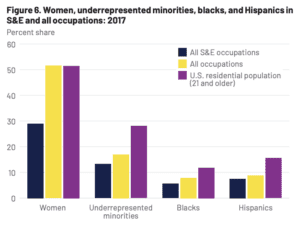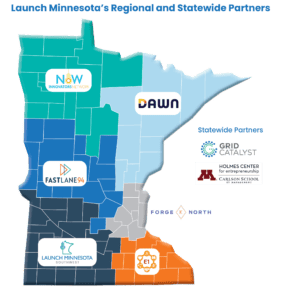As we continue to rely less on fossil fuels and move toward more renewable energy sources, one of the greatest challenges that comes with our current energy transition is achieving energy justice. How do we ensure that our energy transition is just and equitable? Will the benefits of our energy transition, such as the creation of new jobs and technologies, be spread out equally across society? Who will be benefiting the most from the new job opportunities, and how can we make these accessible to everyone? These are some of the numerous questions we try to address in my Energy Justice graduate course at the Humphrey School and have carried over into my fall Fellowship with Grid Catalyst. My personal, education, and career experiences have helped me better understand the importance of diversity, equity, and inclusion (DEI) and what it means for the energy field.
Why I value DEI:
Diversity, equity, and inclusion – we hear these words used a lot by many companies and organizations, striving for improved representation in the workplace. We are seeing more leaders of these companies recognizing the need to improve DEI efforts by sparking conversations and further turning them into plans. The hardest part, however, is turning these plans into actions and struggling to incorporate DEI efforts.
As a first generation Hispanic woman who is exploring a career in the renewable energy field, diversity is something I have valued everywhere I go. Whether in our workplaces, our educational environments, or in our friendships, being part of diverse environments is extremely important to me. The ability to see people from different social and ethnic backgrounds, sharing diverse ideas and experiences, and learning that we all have something valuable to bring to the table, is something so beautiful. To me, it makes me feel seen, it makes me feel heard, and most importantly, it makes me feel like I belong. My confidence and authenticity can only be reflected in my work when I feel a sense of belonging and inclusivity.
Studies show those who interact with diverse peers in and out of the workplace exhibit increased critical thinking, intellectual engagement, and growth in several other skills. The research is clear that increasing DEI in the workforce allows companies to achieve better performance. Underrepresentation in the Science, Technology, Engineering, and Math (STEM) field is a huge gap we face today. The National Girls Collaborative Project reports that only 28% of the science and engineering workforce is made up of women, and men greatly outnumber women in STEM college majors. Racial disparities are also present. For example, Black individuals makeup only 6% of the STEM workforce (according to the US Census Bureau).

Shortly after starting my fellowship position at Grid Catalyst, I learned that we were working with the Center for Economic Inclusion to analyze equity and access in energy entrepreneurship. The final report on this initiative identifies the steps that need to be taken for diverse founders and innovators to access opportunities and pathways in energy innovation and entrepreneurship. You can read the full report here.
One of my favorite parts about the report is that it acknowledges the need to change the stereotypical narrative that society has created around a career in STEM – and it starts early. Our typical assumptions of who should be an engineer or a doctor are changing – this starts with the examples that our leadership teams represent. Grid Catalyst – which identifies as one of these leaders – plays a critical role in changing this narrative by offering development, mentorship, sponsorship, and organization opportunities around these DEI objectives.
has created around a career in STEM – and it starts early. Our typical assumptions of who should be an engineer or a doctor are changing – this starts with the examples that our leadership teams represent. Grid Catalyst – which identifies as one of these leaders – plays a critical role in changing this narrative by offering development, mentorship, sponsorship, and organization opportunities around these DEI objectives.
Moving Forward
What can you start doing? Let’s take the DEI conversation and turn it into actionable steps that you can take in the workplace. Starting today, you can create structural changes such as:
- Improving job hiring and promotion pathways for women and people of color. This will allow for more inclusive cultures in the workplace, which will create safe spaces where everyone has equal chances to speak up and express their opinions. More importantly, creating pathways to leadership are important in changing representation, culture, and power structures in the STEM field moving forward.
- Improve and promote STEM education among women and BIPOC individuals starting in early education. There are several programs that target underrepresented high schoolers interested in the STEM field that offer mentorship opportunities, such as TRIO Upward Bound, which I personally participated in. Other local existing programs that support STEM innovation among young students include Junior Achievement North, the Science Museum of Minnesota, and the newly launched US Department of Education STEM diversity initiative, You Belong in STEM. Look for partnership opportunities with these existing programs and others in your community.
- Create workshops and training opportunities to help young professional women and people of color obtain the skills and confidence they need to succeed in a STEM field.
If you find yourself afraid of making mistakes during this process, I’d like you to take away from this blog that it is better to start somewhere and make mistakes, than to not do anything at all. Although DEI is thought of as a collective effort, it starts with the individual. It starts with you.
Note
Grid Catalyst is also hosting a discussion about equity and access in energy innovation on February 2nd. Registration for in-person and virtual attendance is open.







